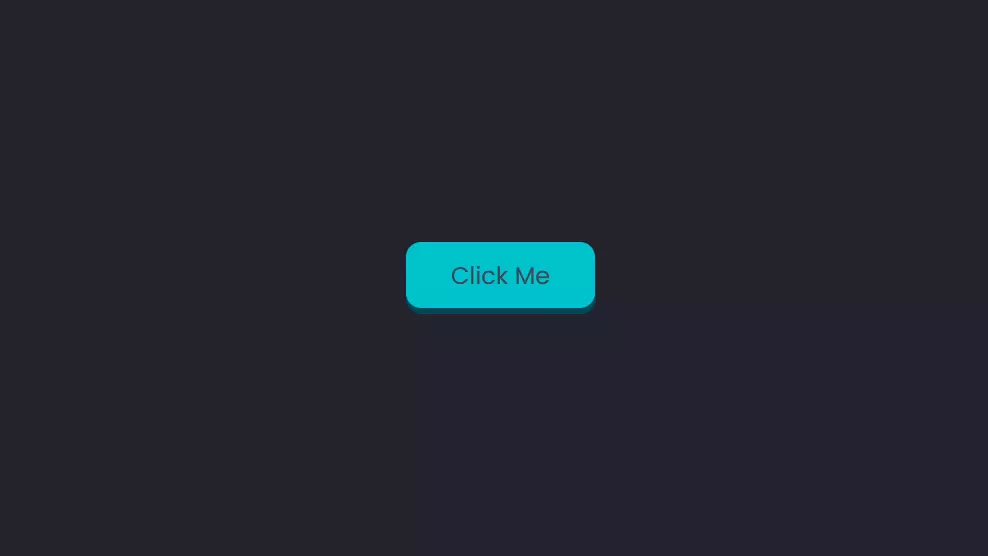
Web page button micro-interaction design: Ten tips to improve user experience
This article will introduce ten simple ways to add micro-interactions to web buttons to enhance user experience and make the website more attractive.
Core points:
- Enhanced user experience: Microinteraction provides instant feedback, improves user participation and improves overall user experience.
- Multiple effects: Tutorials cover sound, border animation, 3D transformation and other effects, as well as more complex interactions such as shape and text changes.
- Accessibility and Interaction: Sound-based micro-interactions are especially useful for improving accessibility, especially on mobile devices.
- The use of CSS and JavaScript: All effects are achieved through CSS styles and animations and dynamic interactions in JavaScript.
- Interactive feedback: For example, visual feedback such as button jitter or icon and text changes can effectively confirm user operations.
- Effect combination: Tutorials encourage the combination of different microinteractions to create unique user interface elements that enhance functionality and aesthetics.
What is micro-interaction?
Micro-interactions are small interactions or animations on the user interface that provide instant feedback as users perform actions, maintain user engagement and improve the overall experience. For example: input indicators during online chat, download progress bar, and load indicators during refreshing pages, etc.
Thebutton is one of the most common interactive elements on a website and can perform various tasks such as toggling, submitting, deleting, closing, selecting (via radio buttons, option buttons, or selection menus) and more.
Bounce 3D Micro Interaction
We can use the CSS transform property to create a 3D button that bounces when clicked.

HTML Code:
<button class="btn"> <span class="text">Click Me</span> </button>
CSS Code:
.btn {
position: relative;
background: #004958;
border-radius: 15px;
border: none;
cursor: pointer;
}
.text {
display: block;
padding: 15px 45px;
border-radius: 15px;
background: #00c2cb;
font-size: 1.5rem;
font-weight: 500;
color: #42455a;
transform: translateY(-6px);
transition: transform ease 0.1s;
}
.btn:active .text {
transform: translateY(-2px);
}

(The detailed code and explanation of the remaining nine micro-interactions are omitted here to maintain the structure and picture position consistent with the original text)
The benefits of micro-interaction
Micro-interactions are not just fancy small effects, they play an important role in improving user experience. They provide instant feedback, make the website more attractive and improve user engagement.
Conclusion
This article introduces ten ways to create microinteractions for buttons, from 3D bounce buttons to adding sound and animation borders, as well as changing button shapes, text and icons, and finally the glowing effect when hovering. Remember, simplicity is paramount, and every micro-interaction should have its purpose. You can try combining these methods to create more unique micro-interaction effects.
(The FAQ part is also omitted here to remain consistent with the original text)
The above is the detailed content of 10 Simple CSS and JavaScript Micro-interactions for Buttons. For more information, please follow other related articles on the PHP Chinese website!

Hot AI Tools

Undress AI Tool
Undress images for free

Undresser.AI Undress
AI-powered app for creating realistic nude photos

AI Clothes Remover
Online AI tool for removing clothes from photos.

Clothoff.io
AI clothes remover

Video Face Swap
Swap faces in any video effortlessly with our completely free AI face swap tool!

Hot Article

Hot Tools

Notepad++7.3.1
Easy-to-use and free code editor

SublimeText3 Chinese version
Chinese version, very easy to use

Zend Studio 13.0.1
Powerful PHP integrated development environment

Dreamweaver CS6
Visual web development tools

SublimeText3 Mac version
God-level code editing software (SublimeText3)

Hot Topics
 Which Comment Symbols to Use in JavaScript: A Clear Explanation
Jun 12, 2025 am 10:27 AM
Which Comment Symbols to Use in JavaScript: A Clear Explanation
Jun 12, 2025 am 10:27 AM
In JavaScript, choosing a single-line comment (//) or a multi-line comment (//) depends on the purpose and project requirements of the comment: 1. Use single-line comments for quick and inline interpretation; 2. Use multi-line comments for detailed documentation; 3. Maintain the consistency of the comment style; 4. Avoid over-annotation; 5. Ensure that the comments are updated synchronously with the code. Choosing the right annotation style can help improve the readability and maintainability of your code.
 The Ultimate Guide to JavaScript Comments: Enhance Code Clarity
Jun 11, 2025 am 12:04 AM
The Ultimate Guide to JavaScript Comments: Enhance Code Clarity
Jun 11, 2025 am 12:04 AM
Yes,JavaScriptcommentsarenecessaryandshouldbeusedeffectively.1)Theyguidedevelopersthroughcodelogicandintent,2)arevitalincomplexprojects,and3)shouldenhanceclaritywithoutclutteringthecode.
 Java vs. JavaScript: Clearing Up the Confusion
Jun 20, 2025 am 12:27 AM
Java vs. JavaScript: Clearing Up the Confusion
Jun 20, 2025 am 12:27 AM
Java and JavaScript are different programming languages, each suitable for different application scenarios. Java is used for large enterprise and mobile application development, while JavaScript is mainly used for web page development.
 Javascript Comments: short explanation
Jun 19, 2025 am 12:40 AM
Javascript Comments: short explanation
Jun 19, 2025 am 12:40 AM
JavaScriptcommentsareessentialformaintaining,reading,andguidingcodeexecution.1)Single-linecommentsareusedforquickexplanations.2)Multi-linecommentsexplaincomplexlogicorprovidedetaileddocumentation.3)Inlinecommentsclarifyspecificpartsofcode.Bestpractic
 Mastering JavaScript Comments: A Comprehensive Guide
Jun 14, 2025 am 12:11 AM
Mastering JavaScript Comments: A Comprehensive Guide
Jun 14, 2025 am 12:11 AM
CommentsarecrucialinJavaScriptformaintainingclarityandfosteringcollaboration.1)Theyhelpindebugging,onboarding,andunderstandingcodeevolution.2)Usesingle-linecommentsforquickexplanationsandmulti-linecommentsfordetaileddescriptions.3)Bestpracticesinclud
 JavaScript Data Types: A Deep Dive
Jun 13, 2025 am 12:10 AM
JavaScript Data Types: A Deep Dive
Jun 13, 2025 am 12:10 AM
JavaScripthasseveralprimitivedatatypes:Number,String,Boolean,Undefined,Null,Symbol,andBigInt,andnon-primitivetypeslikeObjectandArray.Understandingtheseiscrucialforwritingefficient,bug-freecode:1)Numberusesa64-bitformat,leadingtofloating-pointissuesli
 JavaScript vs. Java: A Comprehensive Comparison for Developers
Jun 20, 2025 am 12:21 AM
JavaScript vs. Java: A Comprehensive Comparison for Developers
Jun 20, 2025 am 12:21 AM
JavaScriptispreferredforwebdevelopment,whileJavaisbetterforlarge-scalebackendsystemsandAndroidapps.1)JavaScriptexcelsincreatinginteractivewebexperienceswithitsdynamicnatureandDOMmanipulation.2)Javaoffersstrongtypingandobject-orientedfeatures,idealfor
 How to work with dates and times in js?
Jul 01, 2025 am 01:27 AM
How to work with dates and times in js?
Jul 01, 2025 am 01:27 AM
The following points should be noted when processing dates and time in JavaScript: 1. There are many ways to create Date objects. It is recommended to use ISO format strings to ensure compatibility; 2. Get and set time information can be obtained and set methods, and note that the month starts from 0; 3. Manually formatting dates requires strings, and third-party libraries can also be used; 4. It is recommended to use libraries that support time zones, such as Luxon. Mastering these key points can effectively avoid common mistakes.






